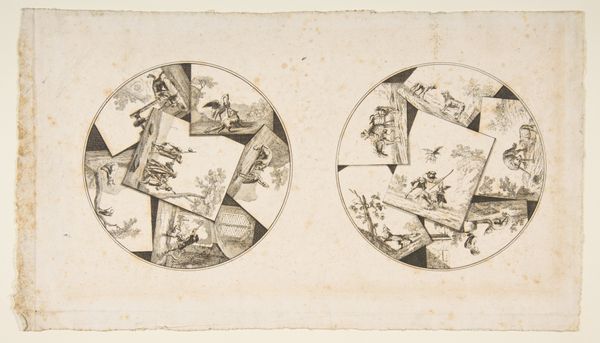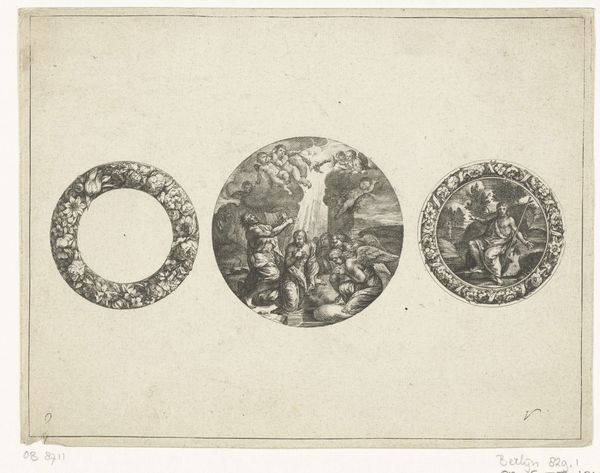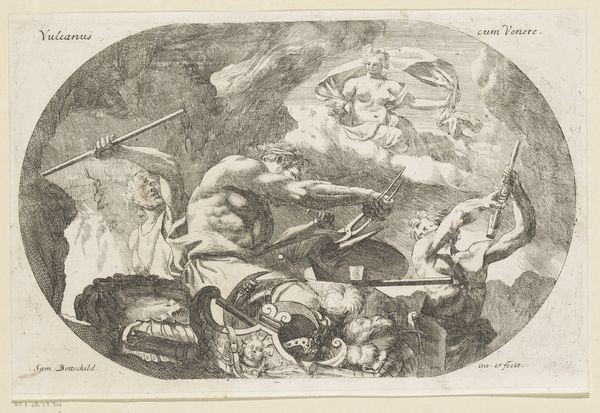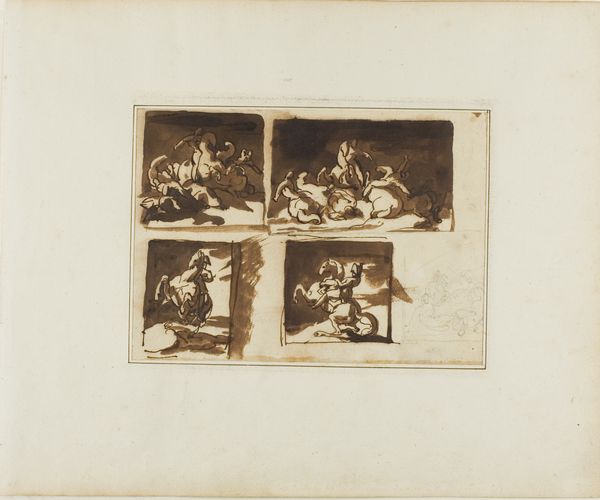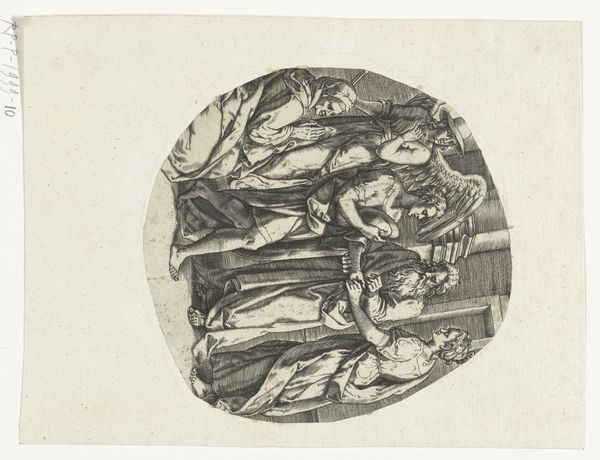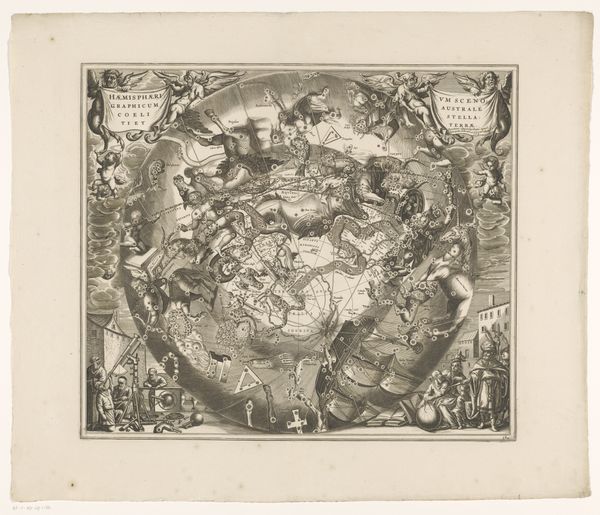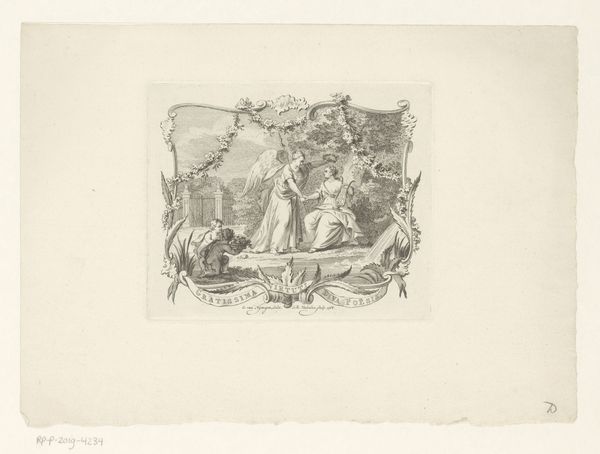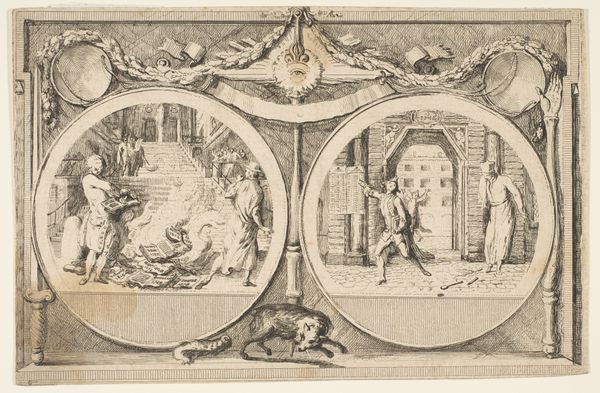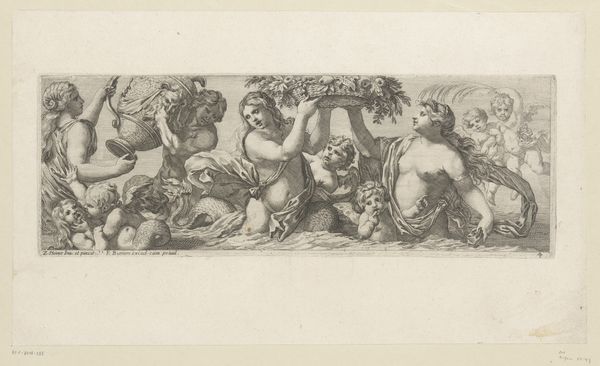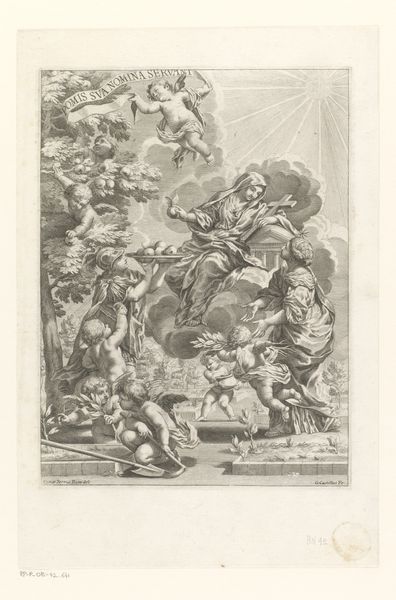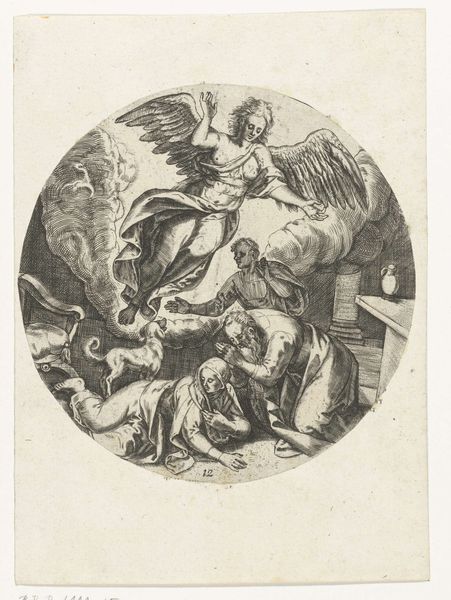
Designs for Plates Taken from Oudry's Illustrations to La Fontaine's Fables 1755 - 1790
0:00
0:00
Dimensions: sheet: 5 1/4 x 11 1/2 in. (13.4 x 29.2 cm)
Copyright: Public Domain
Curator: This print presents a pair of intriguing circular compositions, each tessellated with vignettes, by Jean-Baptiste Oudry, titled "Designs for Plates Taken from Oudry's Illustrations to La Fontaine's Fables," created between 1755 and 1790. Editor: My first impression is one of organized chaos. The vignettes are rendered with exquisite detail but together create a dizzying array of scenes, somewhat reminiscent of a storyboard or a roulette wheel of narratives. Curator: Indeed. Oudry meticulously renders each tableau using engraving and etching, paying close attention to line quality and tonal variation to differentiate forms and textures. Note the use of light and shadow to create depth, lending volume to each figure. Editor: But what of the "fables" themselves? Oudry was working in a France rife with social inequities. Were these innocent illustrations or subtle commentaries on the moral failings of the aristocracy? I see a hunter, men attacking beasts. Is there a darker critique embedded within? Curator: Certainly, the themes in La Fontaine’s Fables, which Oudry illustrated extensively, lend themselves to social commentary, utilizing animals as allegories for human folly and vice. These designs offer glimpses into that world, framed by compositional balance. Consider the organization, two circular designs reflecting one another—emphasizing symmetry. Editor: It's that framing, though, that both interests and frustrates me. The neat geometric order contains scenes of considerable violence and struggle. Does the design’s structured form ultimately undermine any potential critique of social power by aesthetically smoothing it out? It feels too polished to be truly subversive. Curator: I would say the formal constraints serve to elevate and immortalize the moral lessons contained in each scene, lending the fables the visual language they merit, given the status afforded to them. Through the arrangement of the circular forms, Oudry provides a clear symbolic hierarchy. Editor: It's a question of how we read that symbolic structure, isn’t it? Does it serve the status quo, or does it invite questioning of its underpinnings? The tight detail suggests a precision in storytelling that begs a closer reading. Curator: A worthwhile exercise. By meticulously dissecting the artwork's elements, perhaps further analysis will clarify our perspective on its purpose and societal significance. Editor: Maybe. Either way, it makes you wonder what it means for power and oppression when told through carefully organized lines.
Comments
No comments
Be the first to comment and join the conversation on the ultimate creative platform.
